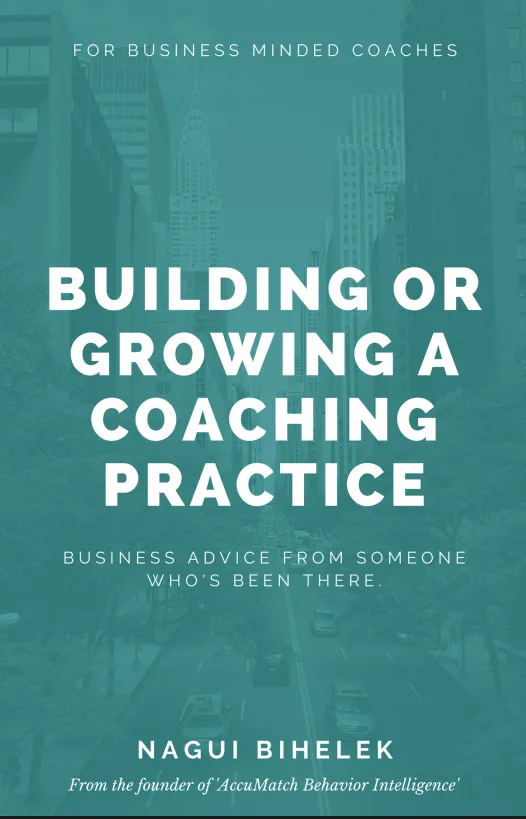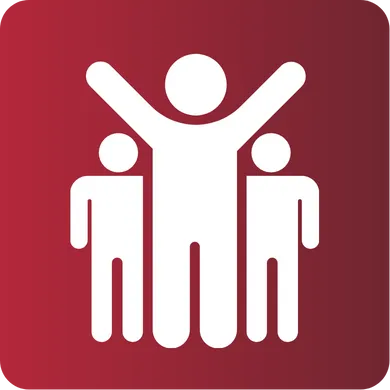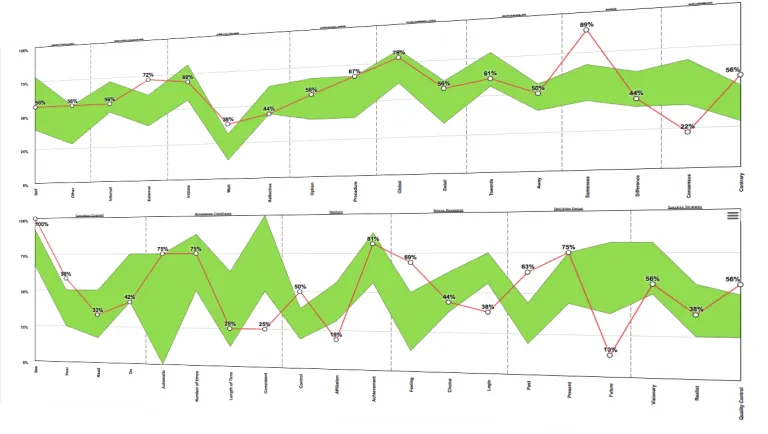Books & Downloadable Resources
Evidence-based tools to help you coach smarter, lead more effectively, and grow with behavioral precision.
Signature Books
The Leadership Intelligence Cookbook
196 Ready-to-Use Leadership Situations and Strategies
A practical field manual to help you coach better, lead smarter, and respond more effectively in real time. Think of it as your go-to behavioral reference guide.
Use it like a thesaurus for leadership moments
Key Focus: Decode and shift behavior quickly—not just understand it
Build a Successful Coaching Practice
Business Advice from Someone Who's Been There
Step-by-step guidance on launching, growing, and sustaining a profitable coaching business, with real examples and BI-based philosophy.
For business-minded coaches seeking structure
Key Focus: Branding, positioning, and scaling for revenue

The Leadership Intelligence Handbook
196 Ready-to-Use Leadership Situations and Strategies
A practical field manual to help you coach better, lead smarter, and respond more effectively in real time. Think of it as your go-to behavioral reference guide.
Use it like a thesaurus for leadership moments
Key Focus: Decode and shift behavior quickly—not just understand it

Build a Successful Coaching Practice
Business Advice from Someone Who's Been There
Step-by-step guidance on launching, growing, and sustaining a profitable coaching business, with real examples and BI-based philosophy.
For business-minded coaches seeking structure
Key Focus: Branding, positioning, and scaling for revenue

Behavior Science Essentials
Understanding the Difference Between Behavior and Personality
An insightful exploration of why behavior—not personality—is the most actionable tool for coaching. Includes self-assessment and critical contrasts.
Perfect for coaches tired of personality typing's limitations
Key Insight: Behavior is observable, trainable, and situational
Research & Validation Reports
General Evidence & Validity Report
Scientific foundations of AccuMatchBI’s behavioral mapping methodology, including AI, NLP meta-programs, and measurable patterns.
For professional coaches & academics
Corporate Sector Report
Demonstrates impact of behavior intelligence in leadership, HR strategy, and organizational performance.
Ideal for executives, HR leaders, and L&D
Small & Medium Enterprises Report
Focused on how SMEs can reduce friction, boost cohesion, and drive profitability through behavior-based team dynamics.
For founders, small business teams & consultants
Ready to Launch Your Future as a Certified Leadership Intelligence Coach?
Real Coaches.
Real Success.

"I’ve been coaching for over a decade, but the BIQ certification completely changed how I work with clients. Understanding their behavior patterns—not just their feelings—gave me a new level of precision. My client retention and referrals have never been higher."
Lena Morales, Executive Coach

"BIQ helped me launch my coaching business fast—with structure, confidence, and real clients."
David Chan, Former VP

"We rolled out BIQ inside our leadership development program. The impact was immediate. Managers became more self-aware, team dynamics improved, and performance conversations finally got real. It’s not just a certification—it’s a competitive edge."
Rachel Owens, Learning & Development Director, UK
Latest From The Blog

Lead By Example
The Real Meaning of “Walking the Talk”
There’s an old saying in leadership—walk the talk. But most leaders forget the deeper truth behind it: your behavior is the message your team receives.
It doesn’t matter how inspiring your words are if your actions contradict them. Teams calibrate not to what you say, but to what you do consistently. Leadership, therefore, is not about giving instructions—it’s about modeling behavior.
When you lead by example, you build credibility, trust, and alignment. When you don’t, even unintentionally, you create confusion and distrust. Leadership intelligence begins with that awareness.

Behavior Sets the Tone
As a leader, you’re constantly broadcasting signals—through your tone, timing, focus, and micro-behaviors.
Ask yourself:
Do I arrive late to meetings?
Do I check my phone while others speak?
Do I interrupt or multitask when I ask my team not to?
Every action, even small ones, shapes what your team sees as “normal.” Your behavior becomes the standard.
If you demand accountability, you must model it.
If you preach balance, live it.
If you champion transparency, practice it—even when it’s uncomfortable.
Your team mirrors what you do. Neuroscience calls this the mirror neuron effect—people subconsciously replicate the emotions and behaviors of those around them. If you’re anxious, the team feels it. If you’re calm and grounded, they mirror that stability.
You’re not just the thermometer reading the environment—you’re the thermostat setting the temperature.

Words Matter, but Actions Build Trust
Leaders often underestimate how deeply the brain values behavioral congruence—when words and actions align.
If your body language and tone don’t match your message, trust erodes instantly.
Integrity and congruence aren’t abstract traits—they’re observable signals that the brain processes as “truthful.” The opposite creates confusion and doubt.
So, bridge the gap between intention and action:
Define and share your behavioral commitments publicly.
Track your follow-through.
Hold yourself accountable with the same standards you expect from your team.
When your team sees you living what you expect, they stop needing direction. They start following your example.
Consistency Builds Certainty
Consistency compounds. When your actions are predictable, your team feels psychological safety. They can anticipate how you’ll react, which builds confidence and alignment.
Inconsistent leaders, on the other hand, create constant anxiety. Teams can’t tell whether today’s decision is a one-time reaction or a new rule.
To stay consistent:
Track recurring patterns (missed deadlines, response delays, meeting behavior).
Create a response playbook—predefined rules for predictable scenarios.
Review and adjust quarterly rather than trying to “fix everything” overnight.
Consistency doesn’t mean perfection. It means reliability under pressure.
The Power of Feedback and Reciprocity
Feedback shouldn’t just come once a year in performance reviews. It should be a continuous dialogue.
Ask for feedback as often as you give it. That simple act shows humility and reinforces trust. Reciprocity—the natural human tendency to respond in kind—means your openness invites theirs.
Public acknowledgment also strengthens culture. When leaders recognize feedback publicly, it signals transparency and fairness. It reminds the team: “We’re all human, and we’re all learning.”
And that’s key—leaders are human, too. The more you show that truth, the more approachable and respected you become.

Modeling Under Pressure
True leadership shows up not when things are calm—but when they’re chaotic.
Under stress, people revert to default behaviors. That’s why crisis modeling is essential.
Pre-plan your behavior under pressure. Practice scenarios with your team so everyone learns how to stay grounded, communicate clearly, and make decisions calmly.
When you lose composure, the team mirrors that anxiety. But when you stay focused, they take their cue from you.
Even better—own your mistakes. When you can say, “I didn’t handle that well. What can I do better?”—you model vulnerability, and that gives others permission to be honest and accountable too.
From Compliance to Commitment
The ultimate shift in leadership is moving from compliance to commitment.
Compliance is external—it relies on control, supervision, and enforcement. Commitment is internal—it grows from inspiration, trust, and shared values.
You can’t command commitment. You earn it when people believe in what you model.
When your behavior aligns with your message:
Accountability rises naturally.
Initiative increases.
Engagement becomes self-driven.
People don’t follow mandates—they follow models.
So, when something isn’t working in your team, look in the mirror first. Your team’s behavior might be reflecting yours.

Practical Ways to Lead by Example
Here’s how to start applying these principles today:
Audit Your Micro-Behaviors
Observe how you show up in meetings, in feedback sessions, or during stressful moments.Bridge Gaps Publicly
Declare what you’re working on and let the team see you follow through.Track and Celebrate Consistency
Measure not just results but behavioral alignment—your own and your team’s.Create a Response Playbook
Predetermine how you’ll respond to recurring challenges. Clarity reduces reactivity.Invite and Act on Feedback
Feedback loops sustain trust. Ask often. Respond visibly.Model Humanity
When you fall short, own it. When others do, offer empathy.Practice Under Pressure
Simulate stress scenarios so composure becomes your new default.
When your team witnesses this consistency, they don’t just comply—they commit. And that’s when leadership becomes contagious.

Final Thought: Be the Mirror
The essence of leading by example is self-awareness. The moment you recognize that your team is your mirror, leadership becomes an act of conscious modeling.
Everything you want your team to embody—accountability, transparency, collaboration—must start with you. Your actions are your loudest message.
Ready to Lead Behaviorally?
If you’re ready to elevate your leadership through Behavior Intelligence and practical frameworks that align culture, performance, and trust—
👉 Join the BIQ Leadership Network or explore the Leadership Intelligence Program at BIQOrg.com/events.
Lead consciously. Lead behaviorally. And most importantly—lead by example.
Subscribe to our Newsletter!
Get the latest insights on coaching, behavior intelligence, & leadership.
Copyright 2025 • All Rights Reserved
Behavior Intelligence Organization is a Division of NLP Profiles Inc.
Terms of Use | Privacy Policy
Subscribe to our Newsletter!
Get the latest insights on coaching, behavior intelligence, & leadership.
Copyright 2025 • All Rights Reserved
Behavior Intelligence Organization is a Division of NLP Profiles Inc.
Terms of Use | Privacy Policy









